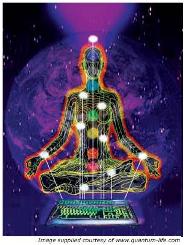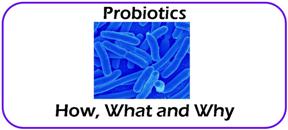Who Uses Complementary and Alternative Medicine?
Complementary or alternative medicine, was not so "alternative" in past times. Nor is it necessarily considered "complementary" or "alternative" in other cultures and regions - rather, it simply is one of the ways in which health is managed.
In a review published in the Spring 2012 issue of
The Oschner Journal,
the authors reviewed published studies on the prevalence of different alternative therapies in different countries, and for different health concerns.
Here's a list of some of their findings:
- Women were more likely to use complementary and alternative therapies than men.
- People with a higher level of education were more likely to use alternative health options.
- People with a higher than average income were more likely to use complementary and alternative therapies.
- Homeopathy and Acupuncture were more popular in European countries than elsewhere.
- Back pain, insomnia, depression, stomach and intestinal complaints, and headaches or migraines were the most common reasons people sought alternative therapies.

- Medical students were the most critical of complementary and alternative medicine in comparison to nursing and pharmacy students, and were the least likely to have ever consulted an alternative practitioner.
- Medical students reported the lowest level of education about complementary and alternative therapies, and the least interest in training for integrative medicine (the use of complementary and alternative medicine alongside conventional medicine) compared with students in other health fields.
- In 2004 the National Center for Complementary and Alternative Medicine (NCCAM) within the United Sates'
National Institutes of Health reported
that over 1/3 of all Americans over the age of 18 use alternative therapies. If prayer is included, that estimate increases to 62% of the adult population. This survey also supported many of the findings already listed.
- The
2004 study by the NCCAM
also revealed that 28% of the people using alternative options chose to do so because they believed that conventional medicine would be unable to address their health concern. This finding was significantly different from the results of past studies, suggesting decreased satisfaction with, or confidence in conventional options.
In the United States, in particular, there are a variety of alternative health management options that fall under the label of "complementary and alternative medicine."
In addition, some forms of medicine that are considered alternative in the United States such as Traditional Chinese Medicine (TCM) or Ayurveda, are not considered "alternative" in China or India, for example. Both of those modalities also include dietary modifications, which is often considered an "alternative" approach in the United States.
Here is a basic list of the therapies that are considered "alternative" in the United States:
- Chiropractic Medicine
- Massage
- Diet-Based Therapy
- Mega-Vitamin Use (anything greater than the RDA of any specific vitamin)

- Acupuncture and Acupressure
- Herbs, Botanicals, or Enzymes
- Yoga, Tai Chi, and similar practices
- Traditional Chinese Medicine
- Energy Medicine
- Aromatherapy
- Light Therapy
- Homeopathy
- Ayurvedic Medicine
- Magnetic Therapy
- Prayer
- Meditation
- Biofeedback
- Dietary Changes
- Lifestyle/Behavioral Changes
Have you ever used an "alternative" therapy? Do the list of alternative therapies, or the statistics surprise you? What draws you to alternative options? Share below!
Return to the
Science of Natural Health Homepage
from
Who Uses Complementary and Alternative Medicine?
Go to
Articles by Topic
from
Who Uses Complementary and Alternative Medicine?
References
Frass M, Strassl RP, Friehs H, Müllner M, Kundi M, Kaye AD. "Use and Acceptance of Complementary and Alternative Medicine Among the General Population and Medical Personnel: A Systematic Review." The Ochsner Journal. Spring 2012; 12(1): 45-56.














